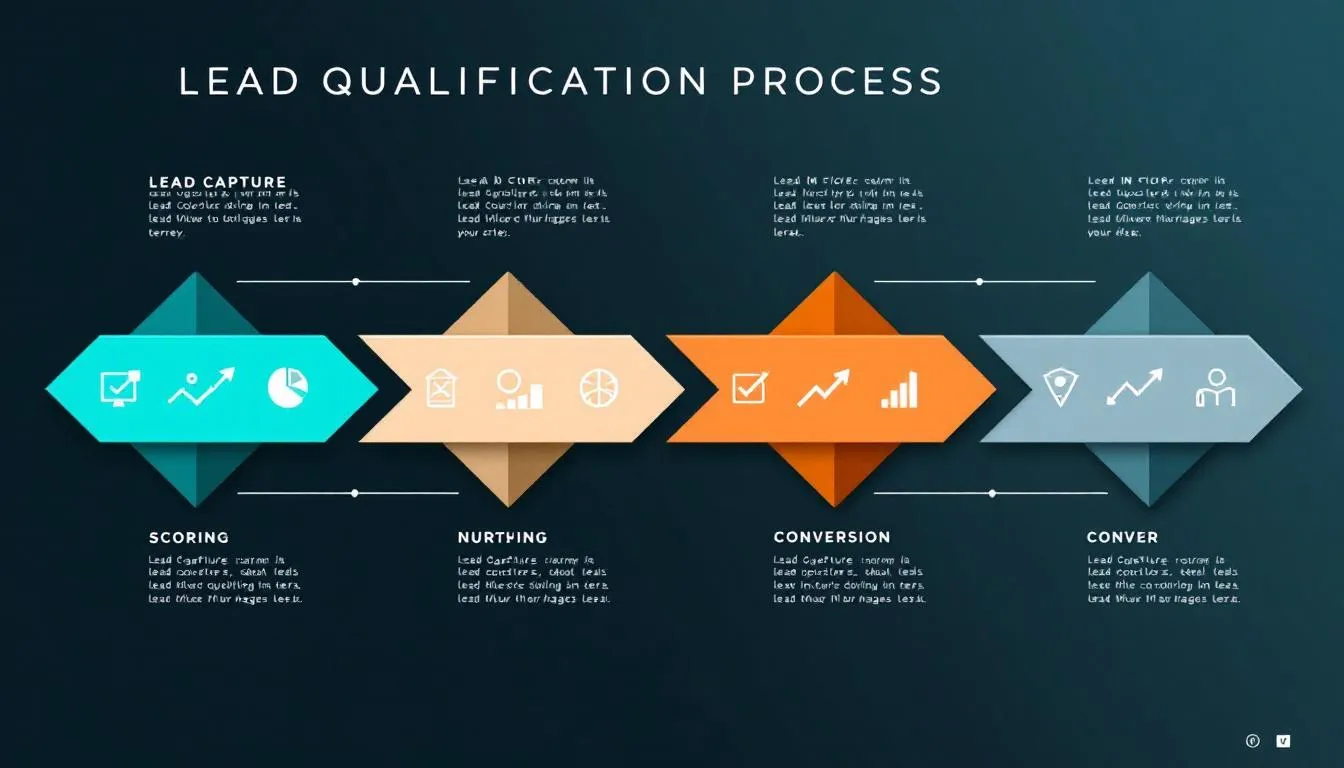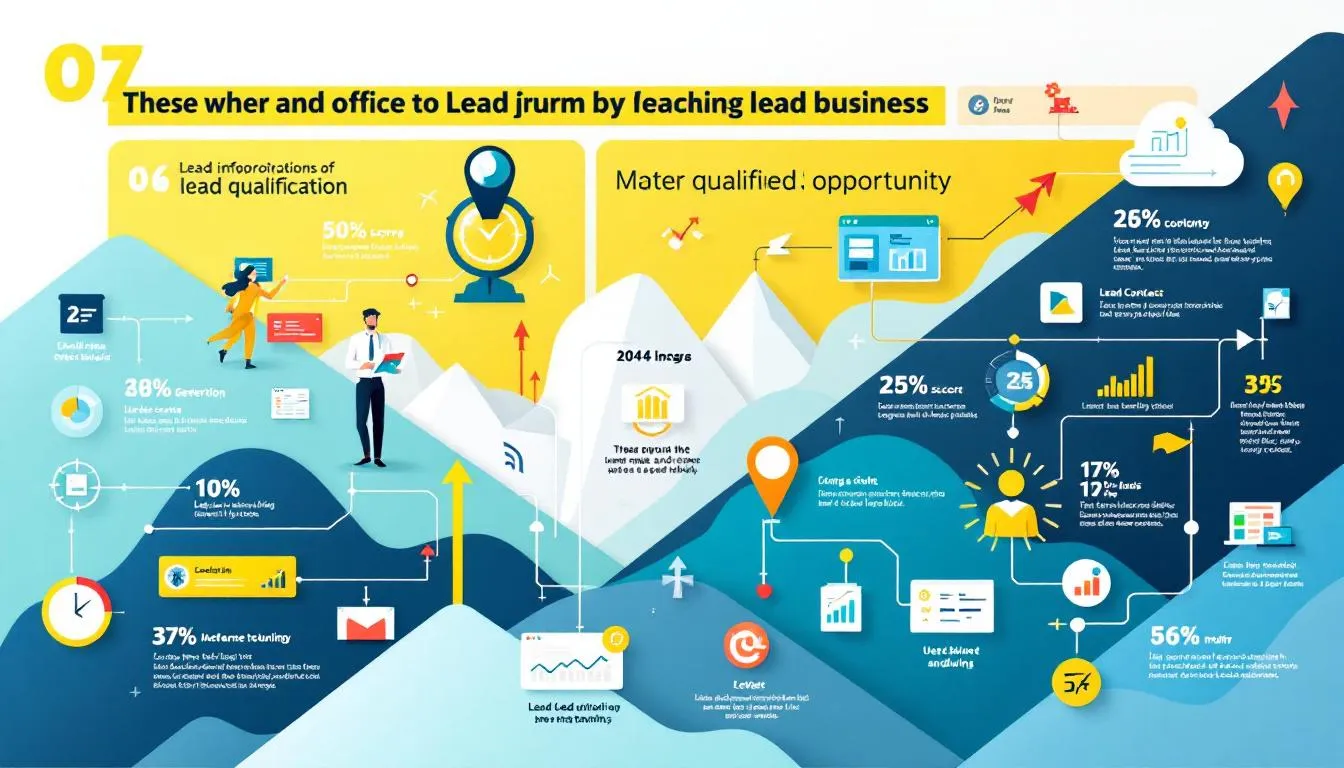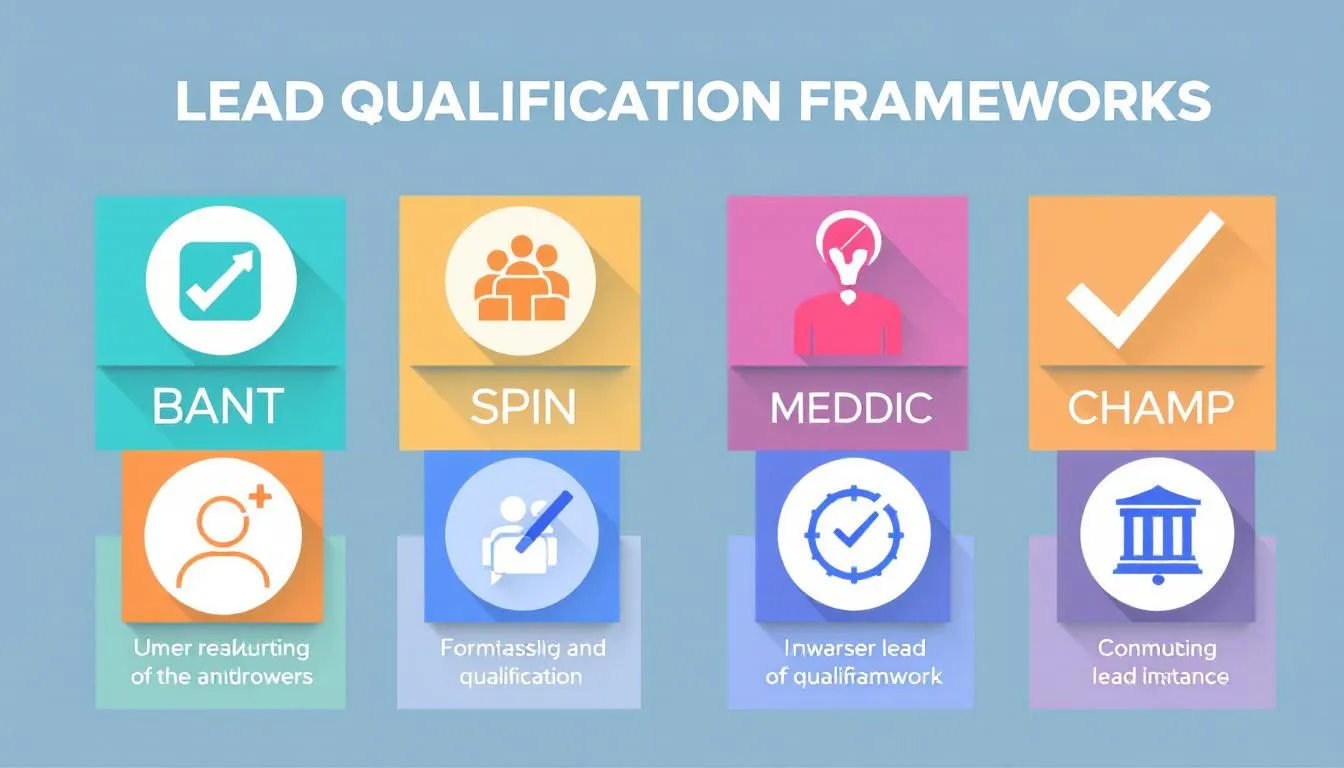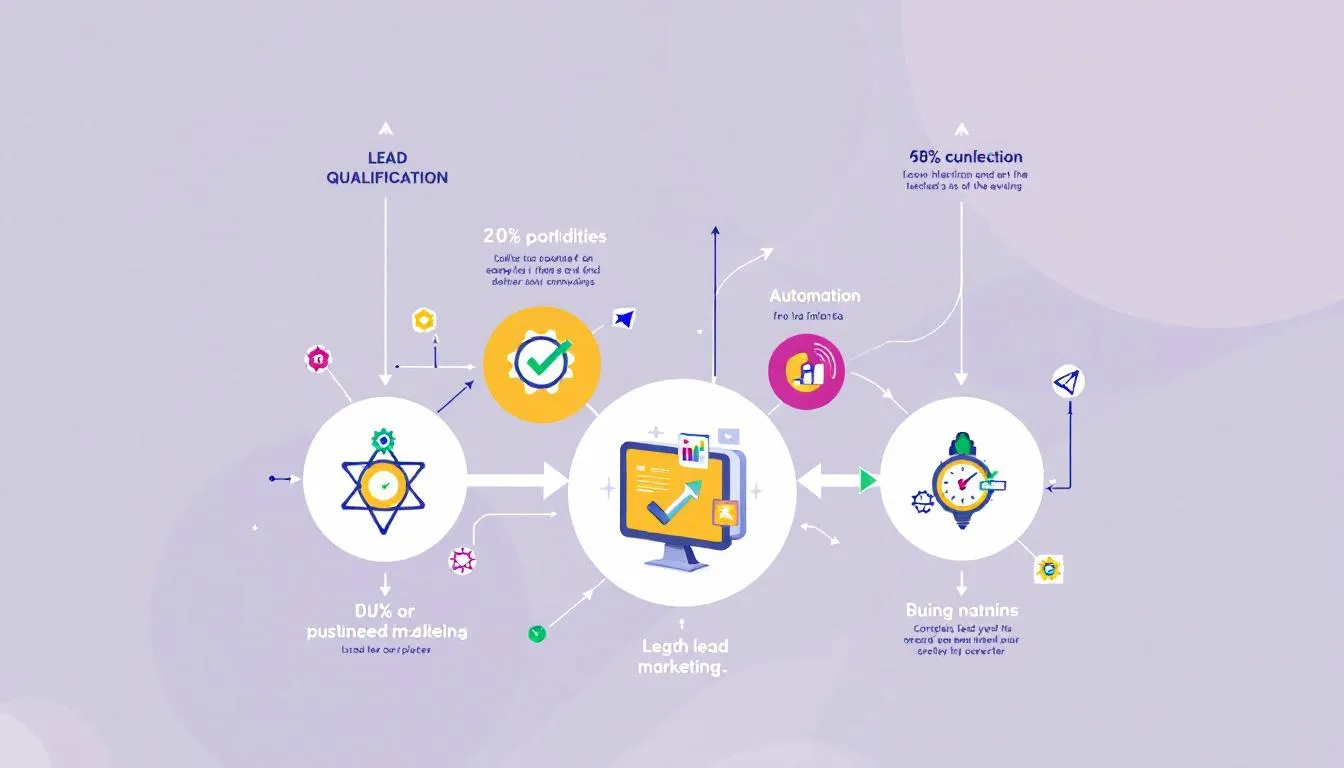Key Takeaways
- Lead qualification is key to identifying high-potential prospects, saving time, and enhancing sales performance.
- The lead qualification process includes stages like MQL, SAL, and SQL to effectively categorize leads based on their readiness to buy.
- Utilizing frameworks like BANT or CHAMP helps streamline the lead qualification process and improve conversion rates.
What is Lead Qualification?

Lead qualification is a vital part of effective sales strategies that helps identify promising opportunities. The primary goal of lead qualification is to drive leads, qualify them, and convert them into paying customers. An efficient lead qualification process can enhance sales success by directing focus towards high-potential opportunities.
A qualified prospect is defined as a lead with high conversion potential based on specific criteria. This involves understanding whether their needs align with your offerings and their financial capability to purchase. Lead qualification identifies prospects with the highest potential customer to convert into customers.
Determining if a lead is prepared to make a purchase is a key aspect of lead qualification. It also identifies leads that require additional nurturing. Establishing rigorous qualification criteria helps businesses avoid wasting time on unqualified leads. Validating information and confirming details during lead qualification is crucial for preventing miscommunication and ensuring accurate follow-up.
Why Lead Qualification is Crucial for Your Business

The lead qualification process is a collaborative effort between marketing and sales teams to optimize resource allocation. It assists in avoiding the pursuit of leads that are unlikely to convert, thus saving time and effort. Proper lead qualification provides numerous benefits for marketing and sales effectiveness.
Identifying which potential customers are most likely to succeed with your product is a core function of lead qualification. Aligning marketing and sales efforts ensures an effective transition of leads into sales qualified leads (SQLs). This alignment enhances the efficiency of the lead qualification process and ultimately boosts sales performance.
Identifying quality leads helps prevent wasted marketing efforts on prospects who do not match the ideal customer profile. This efficient lead qualification process allows teams to concentrate on leads with the highest likelihood of conversion, effectively qualifying leads and driving business growth.
Key Stages in the Lead Qualification Process
The lead qualification process typically includes multiple lead qualification stages to effectively identify suitable leads. The stages are divided into three categories. They are Marketing Qualified Leads (MQL), Sales Accepted Leads (SAL), and Sales Qualified Leads (SQL). Understanding lead intent and analyzing behavioral criteria are crucial in differentiating between casual interest and genuine intent.
This dynamic ongoing process requires ongoing adjustment to remain effective in the entire process.
Marketing Qualified Leads (MQL)
Marketing Qualified Leads (MQL) are potential customers who have shown significant interest based on defined criteria. Key points about MQLs include:
- An MQL is a lead generated through marketing efforts.
- MQLs engage with content, such as lead magnets like e-books or free trials.
- Identifying MQLs allows sales teams to focus on leads with higher conversion potential.
- This optimization helps sales teams prioritize their efforts effectively.
Sales Accepted Lead (SAL)
A Sales Accepted Lead (SAL) is a type of Marketing Qualified Lead (MQL). It has been verified and approved by the sales team for further evaluation. The lead matches the budget, authority, and readiness to move forward, bridging the gap between marketing and sales teams. A sales rep plays a crucial role in this process.
This transition indicates better alignment with offerings and a higher likelihood of conversion, ensuring efficiency in the lead qualification process.
Sales Qualified Lead (SQL)
Sales Qualified Leads (SQLs) are leads ready to receive a specific sales pitch or offers. SQLs represent leads with buying intent and are the top priority for conversion within the sales team and among sales professionals. Effective alignment between marketing and sales teams is crucial for qualifying sales leads to move smoothly through the sales pipeline.
Utilizing a sales qualification checklist can help maximize the success of converting SQLs.
The Ultimate Lead Qualification Checklist

A lead qualification checklist assists in determining if a prospect meets the criteria to become a customer, allowing teams to focus on high-potential leads. The main purpose of this checklist is to ensure effective lead qualification and higher conversion rates. Key factors to assess include:
- Budget
- Authority
- Need
- Timing
A rigorous lead qualification process is essential for turning prospects into high-value customers. It also helps in accelerating growth.
Define Your Target Audience
An Ideal Customer Profile (ICP) describes all the characteristics of your target audience and target market, including demographics, the challenges they face, and how your solution addresses those challenges. Knowing the specific job titles and industries of your target audience helps create a more defined customer profile.
Identifying the job title and industries enables teams to focus on attracting product-qualified leads that align well with their offerings, including the lead’s job title.
Collect Contact Information
Collecting accurate contact details enables timely follow-up and tailored communication with potential leads. Basic information to collect includes name, email, and top challenges.
This information helps determine the lead’s fit for services and ensures better segmentation during follow-ups.
Understand Needs and Pain Points
Identifying and addressing leads’ pain points can tailor solutions effectively and foster trust between the sales team and the prospect. Asking simple, honest questions is essential to connect with leads and uncover their pain points.
Assessing the need and priority of the problems leads are trying to solve is important for effective lead qualification.
Establish Timeline
Understanding a lead’s timeline for decision-making aids in aligning follow-up strategies with their needs and urgency. Aligning follow-ups to the lead’s decision-making timeline ensures timely engagement, enhancing the likelihood of conversion.
Optimized follow-up approaches can improve the sales team’s conversion rates.
Align with Your Solution
Assessing whether your solution fits the lead’s needs helps in presenting it as a valuable option that aligns with their requirements. Evaluating if your solution solves the lead’s specific problem is crucial in demonstrating its relevance.
Understanding past issues with previous solutions can inform how you position your offering effectively.
Measure Engagement and Interest
Observing lead interactions with content can provide insights into their level of lead’s engagement and readiness to move forward. Tracking actions such as email opens, link clicks, and form submissions is essential for scoring and segmenting leads effectively.
Points can be assign points to leads based on their engagement actions like clicking a lead magnet or attending a webinar.
Explore Current Solutions or Competitors
Identifying leads’ current solutions and competitors is crucial for understanding the market landscape. This exploration helps uncover improvement opportunities in your product or service. Knowing the competition allows you to highlight unique advantages of your offering, enhancing lead qualification and conversion rates.
Evaluate Growth Potential
Assessing a lead’s potential for growth can uncover opportunities for upselling and deeper partnerships in the future. This evaluation helps in focusing sales efforts on qualified prospects and driving business growth, ultimately leading to most promising leads.
Understand Decision-Making Process
Identifying all decision-makers involved in a lead’s purchasing decision process ensures that the correct messaging reaches the right people. This understanding is crucial for navigating the sales process and aligns with the lead’s decision-making authority.
Validate Information and Confirm Details
Validating lead information is crucial for maintaining communication accuracy and building trust with potential clients. This shows attention to detail and a commitment to understanding their needs, enhancing trust.
Aligning with sales teams through shared valuable insights from the validation process is also vital.
Plan Follow-Up Strategy
Tailoring follow-up strategies to the lead’s needs and timeline enhances engagement. A well-structured follow-up strategy nurtures leads through the sales funnel, improving the likelihood of conversion.
A seamless handover keeps the sales team informed about the lead’s journey and context.
Proven Lead Qualification Frameworks

A structured process simplifies the lead qualification process and improves effectiveness. Using a clear qualification process that matches the marketing funnel and a proven lead qualification framework enhances lead qualification. Various lead qualification models exist to assess and prioritize leads effectively.
Regularly reviewing the lead qualification process helps identify patterns and refine lead qualification criteria for further qualification and better results.
BANT
The BANT framework stands for Budget, Authority, Need, and Timeline, which are key criteria for assessing sales readiness:
- Budget: Checks if the product fits within the purchasing budget.
- Authority: Confirms the prospect’s power to make purchasing decisions.
- Need: Addresses if the solution solves a critical problem.
- Timeline: Evaluates their readiness for purchase.
CHAMP
The CHAMP methodology stands for:
- Challenges
- Authority
- Money
- Prioritization
It focuses on essential aspects of lead qualification. The first step is to identify the challenges, needs, and pains of the prospect’s company.
Understanding authority involves clarifying how purchasing decisions are made and identifying the decision-makers with purchasing authority. Assessing financial readiness entails determining whether the lead has the money to invest in your solution and their prioritization of moving forward.
MEDDIC
MEDDIC is an acronym that represents Metrics, Economic Buyer, Decision Criteria, Decision Process, Identify Pain, and Champion. Each component plays a crucial role in the sales process. This framework provides a comprehensive view of the lead for successful sales. Metrics measure the cost-value proposition expected by the prospect. The Economic Buyer is responsible for making purchasing decisions, and understanding their budget availability is crucial.
The key aspects to explore when understanding a prospect’s decision-making process are:
- Decision Criteria and Decision Process: Explore the prospect’s buying process and criteria used to judge the solution.
- Identifying Pain Points: Understand prospects’ struggles and obstacles.
- Exploring Consequences and Implications: Gauge the long-term impact.
Step-by-Step Guide to Qualify Leads
To effectively qualify leads, follow a structured step-by-step guide. It begins with attracting the right leads and gathering basic information. Next, score and segment these leads based on their engagement through lead scoring.
To qualify leads and determine their readiness for purchase, follow these steps:
- Utilize a framework like BANT or CHAMP to assess leads.
- Depending on their stage, either nurture the leads or hand them over to the sales team.
- Regularly review and improve your qualification process to enhance conversion rates.
Attract the Right Leads
Creating content that resonates with your target audience’s specific problems helps draw in the right leads. Understanding your customer needs is crucial for developing effective marketing strategies. Tailored content addresses the challenges and pain points that potential customers face, increasing engagement and response rates.
Collect Basic Info
Gathering fundamental details about leads helps you determine how well they align with your offerings. Collecting basic information enables sales teams to tailor their approach based on lead characteristics. Keeping the form for collecting basic lead generation information short and simple encourages engagement.
Effective follow-up depends on the quality and simplicity of the information collected from not every lead.
Score and Segment
High lead scores indicate immediate attention. Indicators of high engagement include:
- Responding to emails
- Clicking links
- Asking questions Activities such as:
- Visiting a sales page
- Searching for a pricing page suggest a lead has buying intent and interested leads.
Reading blogs and leaving comments indicate a lead’s interest in your products or services. Measuring lead engagement helps sales teams determine when to follow up and how to adjust their approach.
Qualify with a Framework
Utilizing frameworks like BANT provides a structured method to evaluate a lead’s readiness for purchase. To improve the chances of successful engagement:
- Ensure you are talking to the decision-maker.
- Ask the right questions to identify key decision-makers.
- Align your offerings with the priorities of these decision-makers.
- Use questions about decision-making authority to pinpoint who decides on solutions.
GoodSolutions.tech offers tools to make this process seamless and efficient, ensuring you spend your valuable time on leads most likely to convert.
Nurture or Hand Over
Nurturing leads that are not ready to purchase involves providing them with value-driven content to keep them engaged. Qualifying leads allows you to effectively separate ready-to-buy leads from those that need more nurturing.
Having a well-defined follow-up plan is crucial as it keeps the conversation moving, builds trust, and increases the likelihood of conversion. GoodSolutions.tech can assist in automating these nurturing tasks, ensuring no lead is left unattended.
Review and Improve
Regularly analyzing the effectiveness of your lead qualification process helps enhance conversion rates. Assessing opportunities for upselling or expansion can help identify leads suitable for upselling. Recognizing a lead’s growth potential offers guidance for future interactions. It also paves the way for establishing stronger partnerships.
GoodSolutions.tech can help you track these metrics and continuously refine your approach.
How GoodSolutions.tech Enhances Lead Qualification

Automating the lead qualification process can significantly save time and reduce costs by filtering out leads that are unlikely to convert. GoodSolutions.tech offers an all-in-one solution that automates routine tasks to help businesses focus on growth. Tasks such as lead follow-up, post-service reviews, and sending personalized emails can be automated with GoodSolutions.tech.
This automation allows business owners to convert leads while they sleep, capturing more leads and sales with less manual follow-up. Businesses using chatbots can see up to 40% more qualified leads. A boat rental business in Colombia replaced 2 full-time employees by automating their operations with GoodSolutions.tech’s platform.
Summary
In conclusion, lead qualification is crucial for optimizing your sales and marketing efforts. By following a structured process and utilizing proven frameworks like BANT, CHAMP, and MEDDIC, you can identify and focus on high-quality leads. Implementing the ultimate lead qualification checklist ensures that you capture the most promising leads and convert them into loyal customers. Remember, regular review and improvement of your lead qualification process are essential for sustained success. Embrace the power of automation with GoodSolutions.tech to streamline your efforts and watch your business thrive.
Frequently Asked Questions
What does GoodSolutions.tech offer to automate routine tasks?
GoodSolutions.tech provides an all-in-one platform that automates routine tasks, allowing businesses to concentrate on growth and efficiency.
How does GoodSolutions.tech enhance customer support?
GoodSolutions.tech boosts customer support with around-the-clock, multilingual assistance and AI chatbots that deliver quick, precise answers. This means you can get help anytime you need it!
What benefit do businesses using chatbots experience?
Businesses using chatbots often see a significant boost in qualified leads, with increases of up to 40%. This can really help your business grow and connect with more potential customers.
What is the potential impact of responding to new leads within 5 minutes?
Responding to new leads within 5 minutes can significantly boost your chances of closing deals, increasing your success rate by up to 21 times. It’s a game changer for your sales!
#LeadQualification #SalesLeads #LeadScoring #SalesStrategy #SalesTools #BANT #CHAMP #MEDDIC #SalesFunnel #LeadGeneration #SalesAutomation #CRMIntegration #GoodSolutionsTech #QualifiedLeads #SalesEnablement #SalesPipeline #SalesGrowth #DecisionMakers #CustomerJourney #LeadChecklist
